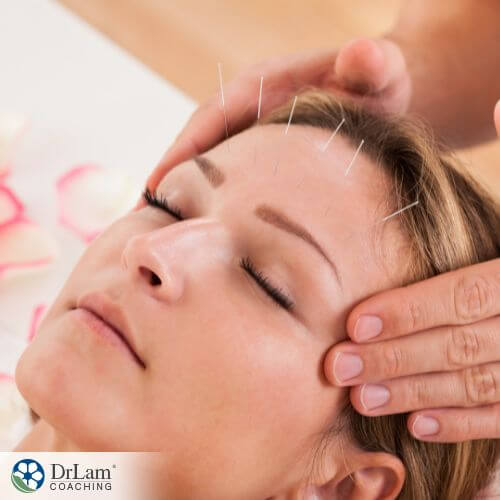 There are many different techniques available to help provide relief from stress and anxiety. These include talk therapy, nutrition, and alternative therapies. One popular alternative therapy is acupuncture. NADA is a form of acupuncture done on the ears, and it may help a wide range of conditions including addiction, anxiety, trauma, and stress. This article will explore the NADA protocol and how it can help to relieve many different conditions.
There are many different techniques available to help provide relief from stress and anxiety. These include talk therapy, nutrition, and alternative therapies. One popular alternative therapy is acupuncture. NADA is a form of acupuncture done on the ears, and it may help a wide range of conditions including addiction, anxiety, trauma, and stress. This article will explore the NADA protocol and how it can help to relieve many different conditions.
NADA stands for the National Acupuncture Detoxification Association (NADA) and is the association that developed the NADA protocol. It is a unique form of acupuncture that uses the ears. During the NADA protocol, one to five needles are bilaterally inserted into the ears on predetermined points (1). They are generally left for 30 to 40 minutes.
There are five different points in the NADA protocol which include the:
By activating these points, it can help to clear the body from toxins and emotions which can help individuals find relief from stress, anxiety, and trauma.
This point helps to promote relaxation within the body and can help to find a balance between the "fight or flight" and "rest and digest" parts of the nervous system. By doing this, it can help to soothe emotions and can help relax muscles that are tight due to stress and/or trauma. It can also have an analgesic effect on organs, reducing pain.
The meaning of shenmen directly translates as "spirit gate." It has a calming effect on the mind as well as the body. It promotes harmony between the major organs - the liver, heart, pancreas, spleen, lung, and kidney as well as their emotional aspects. Each of these organs represents an element as well as an emotion. These are:
This point helps to assist the kidneys in filtering out waste, detoxifying, balancing minerals, and controlling blood pressure. It also helps to support the function of the adrenal glands and helps to balance the levels of cortisol, the main stress hormone in the body. Emotionally, this point helps to build resilience to fear and helps to strengthen willpower.
The lung point helps to strengthen the respiratory and immune systems and helps to control sweating. Emotionally, this point helps to process grief, sadness, and letting go.
Helps to support the liver's role in detoxification and helps to balance blood sugar levels. It can also help to calm your sympathetic nervous system. Emotionally, the liver point can help to resolve anger, anxiety, and aggression.
By activating the different points in the ear, it helps to produce different effects within the body which may help to provide relief from anxiety, stress, addiction, or trauma.
One study focusing on the use of the NADA protocol in healthcare workers experiencing burnout found that over 16 weeks of weekly therapy, self-reported anxiety improved.
 In the case of trauma, the use of the NADA protocol became popular in the early 2000s when it was found that it could help certain individuals to cope. One of the ways that it may help with trauma is that it can help to shift the body from a fight or flight response and can help produce rest and relaxation. This may help some individuals to start processing their trauma or help them to communicate it during therapy. In these cases, not only can it help provide relief for these individuals but it can also help to improve sleep (2).
In the case of trauma, the use of the NADA protocol became popular in the early 2000s when it was found that it could help certain individuals to cope. One of the ways that it may help with trauma is that it can help to shift the body from a fight or flight response and can help produce rest and relaxation. This may help some individuals to start processing their trauma or help them to communicate it during therapy. In these cases, not only can it help provide relief for these individuals but it can also help to improve sleep (2).
In the case of addiction, the NADA protocol can help to provide relief from withdrawal effects such as anxiety and cravings. This therapy can be effective as an adjunct therapy in providing relief for individuals suffering from addiction (2). One study focusing on the use of the NADA protocol in addiction found that not only did the protocol help to relieve anxiety, but it also helped to improve abstinence from alcohol at three and six months and abstinence from tobacco at the six months follow-up consultation (3).
The NADA protocol takes around 30-45 minutes. A trained technician will insert the needles bilaterally into the ears, and then the patient will sit with the needles in their ears for 30-45 minutes. This procedure is nonverbal and requires the individual receiving the procedure to be quiet. This protocol can be used in both adults as well as children and even neonates.
Afterward, the needles will be removed and discarded. This procedure can cause bleeding and some bruising. In rare cases, it can cause dizziness and fainting. During a session, individuals may feel sleepy, emotional, or may experience tingling and warmth in their bodies. A slight headache may occur after therapy; however, this can be improved by reducing the length of time of the session.
After a session, some feel the urge to urinate or defecate. This can happen as a result of the points responsible for detoxification. The NADA protocol can help to assist with detoxification by activating the lungs, kidneys, and liver, helping to naturally remove toxins from your body through your breath, urine, and bowel movements.
The NADA is generally considered safe. However, it is not advised for individuals who are on blood thinners or who experience hemophilia - a rare blood clotting condition. Make sure it is performed by a licensed professional.
There is a link between stress and detoxification, which can be aided by the NADA protocol. Your body copes with any kind of stress, both physical or psychological, through your adrenal glands, releasing stress hormones such as cortisol.
The NeuroEndoMetabolic (NEM) Stress Response System, helps to manage this stress. It consists of six circuits of related organ systems including the Detoxification circuit. However, chronic stress can cause these circuits to dysregulate, leading to adrenal fatigue.
 Adrenal Fatigue Syndrome (AFS) is the non-Addison's form of adrenal dysfunction, where the body's stress response cannot keep up with life's chronic stressors. This can cause imbalances within the NEM system and a range of different symptoms, depending on where in the NEM system the imbalance is occurring.
Adrenal Fatigue Syndrome (AFS) is the non-Addison's form of adrenal dysfunction, where the body's stress response cannot keep up with life's chronic stressors. This can cause imbalances within the NEM system and a range of different symptoms, depending on where in the NEM system the imbalance is occurring.
Your liver, interstitium, and immune system make up the Detoxification circuit in your body. This circuit helps to remove waste products, toxins, and chemicals. An imbalance in this circuit can cause sensitivities to chemicals and supplements along with brain fog.
The NADA protocol can help to assist in the detoxification process. This can help if you have an imbalance in this circuit. It may also help activate the rest and digest response, helping to ease stress.
The NADA protocol is an acupuncture therapy that is safe for most individuals. It activates five points, namely the:
This helps to assist your body in detoxifying not only from waste products and toxins but also from emotions that your body may be holding on to. These points also help to induce a sense of relaxation and can help to reduce stress, anxiety, addiction, and can help individuals who have gone through trauma cope.
If you are finding that you are more stressed and anxious than usual and feel that your body is out of sorts, the team at Dr. Lam can assist. You can call us at +1 (626) 571-1234 or click here.
Carter K and Olshan-Perlmutter M. "NADA Protocol." J Addic Nurs, vol. 25, no. 4, 2014, pp. 182-7. https://alliedhealth.ceconnection.com/files/NADAProtocolIntegrativeAcupunctureinAddictions-1419263411853.pdf
Stuyt EB and Voyles CA. "The National Acupuncture Detoxification Association Protocol, Auricular Acupuncture to Support Patients with Substance Abuse and Behavioral Disorders: Current Perspectives." Subst Abuse Rehabil, vol. 7, 2016 Dec. pp. 169-80. https://www.ncbi.nlm.nih.gov/pmc/articles/PMC5153313/
Carter K, et al. "NADA Ear Acupuncture: An Adjunctive Therapy to Improve and Maintain Positive Outcomes in Substance Abuse Treatment." Behav Sci (Basel), vol. 7, no. 2, 2017 Jun, pp. 37. https://www.ncbi.nlm.nih.gov/pmc/articles/PMC5485467/
Needles are generally used in the NADA protocol. However, if an individual has a fear of needles or is very sensitive, Vaccaria seeds or magnetized beads can be used. These seeds or beads are still able to activate the different points, but do so in a gentler way.
